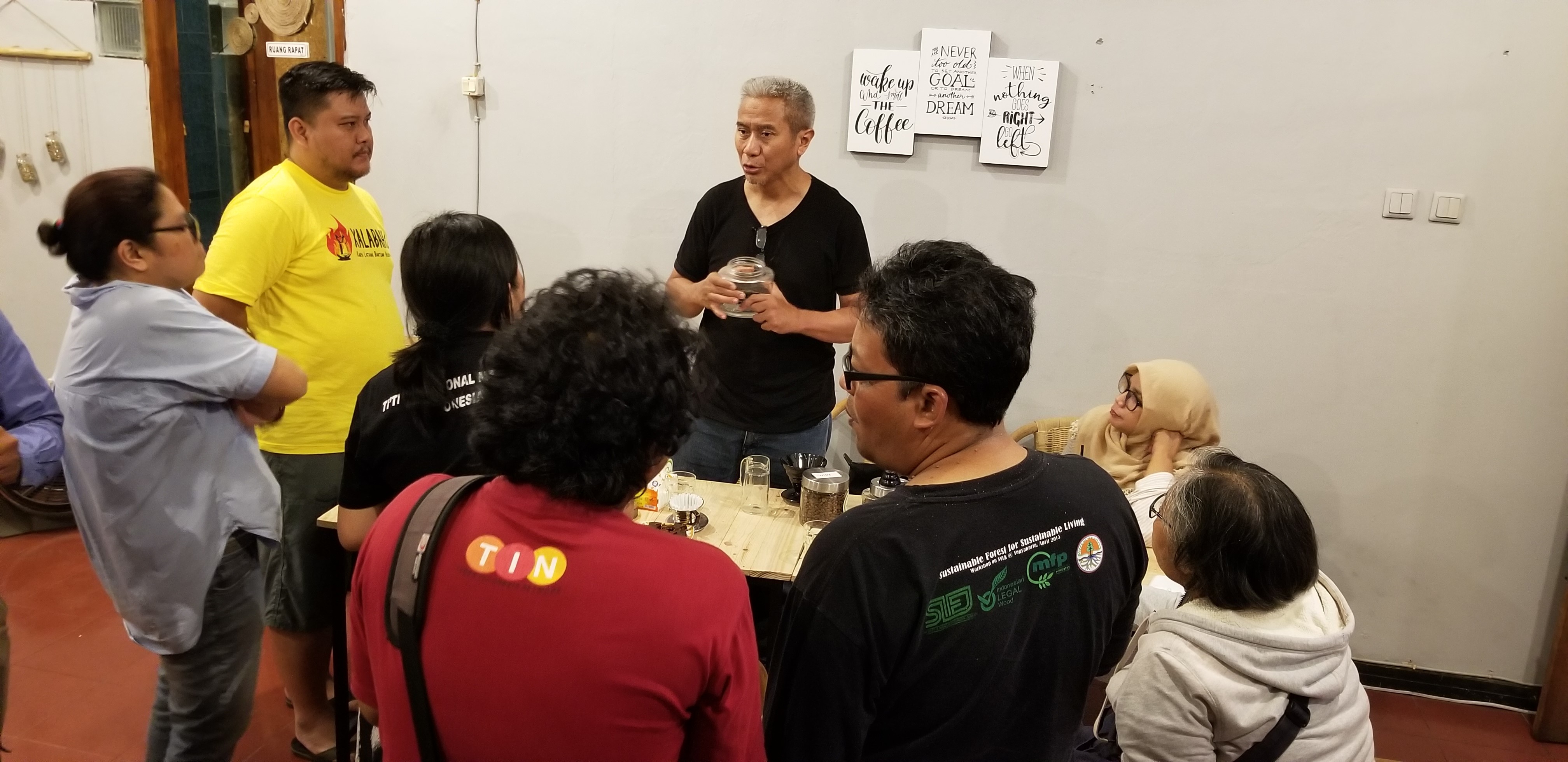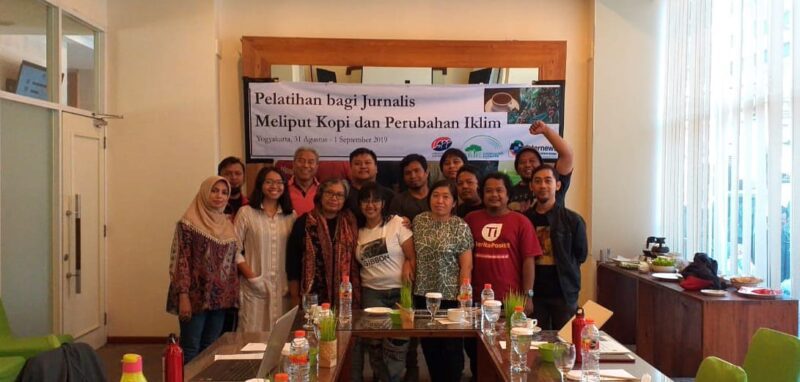By Florence Armein
Coffee has long been one of Indonesia’s leading exports. But now, aside from being sold to meet growing global demand, Indonesian coffee is seeing an uptick in domestic demand, largely from increasingly urban, affluent consumers in major cities across the country.
According to Indonesia Investment, an investment company that monitors the Indonesian economy, Indonesia produced 674,000 tons of coffee in 2018. Of that amount, 314,000 tons went to domestic consumption, data from the Agriculture Ministry shows.
But as the coffee downstream market blooms, particularly within the country, the upstream is confronting new challenges. More farmers are reporting a decline in harvest volumes and have expressed concerns for their future.
Coffee farmers in Kerinci, Jambi province, for example, were farming vegetables such as potatoes, chili and onions a little over 10 years ago. Due to price instability for these crops, they shifted to planting coffee, but now even that commodity has become volatile, with production dropping 40% this year.
These were some of the industry insights reporters learned at two recent media trainings conducted by Lembaga Studi Pers dan Pembangunan (Institute for Press and Development Studies or LSPP).
A non-governmental organization dedicated to media development and research in Indonesia and one of the recipients of the Earth Journalism Network’s 2019 Asia-Pacific Media Grant program, LSPP offered the trainings as a way to increase awareness of the challenges faced by coffee farmers in the country, mainly with regard to climate change impacts. They also wanted to spur the creation of a platform where continued discussion on this topic could take place and build a network where coffee stakeholders can exchange knowledge and information.

“Taking into account their roles in pushing the public agenda, [the] media and journalists need to give more attention to the impacts of climate change to coffee,” said Bintang Samiaji, LSPP’s executive director.
According to the Climate Institute, between 80 and 90 percent of the world’s 25 million coffee farmers are smallholders and among the most exposed to climate change. They generally live and work in developing countries, such as Guatemala, Brazil, Vietnam, and Indonesia – places experiencing environmental degradation, such as deforestation, that scientists say can contribute to increasing temperatures and exacerbate extreme weather patterns and are among the factors threatening coffee production.
Bina Bektiati, a senior journalist who led the three-person training team, said they chose to focus on coffee because of how closely audiences can relate to it.
“It’s part of our lives, it’s close to us, and we feel it will be effective to report on the issues of climate change through coffee, and what it means to the future of coffee if we don’t shine a light on the impacts,” Bektiati said.
A total of 23 young journalists from various regions of Indonesia were selected to participate in the program, which included a two-day training on how climate change is impacting coffee cultivation, story proposal discussions and development and one-on-one mentorship with trainers. One training was held from August 31 to September 1 in Yogyakarta and the other in Bali from September 14-15.
Febrianti, a freelance journalist from Padang, West Sumatra, said she applied for the training because coffee and the threats facing it have become a global concern, and she saw the program as a way for her to raise awareness about climate change.
“The last three months saw the worst drought; no rain at all and coffee beans don’t develop,” she said following the training in Yogyakarta.
Caption: Aditya Heru Wardhana, Director of Society of Indonesian Environmental Journalists, said highlighting coffee as part of the climate change story gives it relevance. Credit: Lembaga Studi Pers dan Pembangunan (LSPP)
Trainer Daroe Handojo, deputy director of the Specialty Coffee Association of Indonesia, said he appreciates the growing interest from journalists on coffee issues.
“But much of their reporting has been focused on the downstream sector … not too much focus on the farmers, much less the impacts of climate change on the beans,” he said.
As the world’s fourth-largest producer and exporter of this major commodity, Indonesia needs to focus on what has been done globally to support climate change adaptation and mitigation efforts around coffee, Handojo added.
“Journalists and media play an important role through their reporting,” he noted. “They need to focus more on sustainability, and solutions.”
At the end of the trainings, six reporters were selected by a panel of judges to receive story grants amounting to $350 each. The three journalists from the Yogyakarta training will focus their stories on adaptation and mitigation efforts by coffee farmers in Mount Kerinci, West Sumatera and Mount Merapi, Central Java. The three journalists from the Bali training will focus on peat-grown coffee and agroforestry in eastern Indonesia.
Caption: Participants getting first-hand experience at freshly brewed Arabica coffee of different washes from Daroe Handojo, Deputy Director of Specialty Coffee Association of Indonesia. Credit: Florence Armein
At the end of the trainings, six reporters were selected by a panel of judges to receive story grants amounting to $350 each. The three journalists from the Yogyakarta training will focus their stories on adaptation and mitigation efforts by coffee farmers in Mount Kerinci, West Sumatera and Mount Merapi, Central Java. The three journalists from the Bali training will focus on peat-grown coffee and agroforestry in eastern Indonesia.
“We hope, through research-based reporting and narratives, to see changes and improvements in the management of climate change that engages consumers, producers, farmers, government and other stakeholders,” said Samiaji.
(Banner photo: Participants and trainers of Climate Change and Coffee training in Yogyakarta, August 31 – September 1, 2019. Credit: Lembaga Studi Pers da Pembangunan (LSPP))
